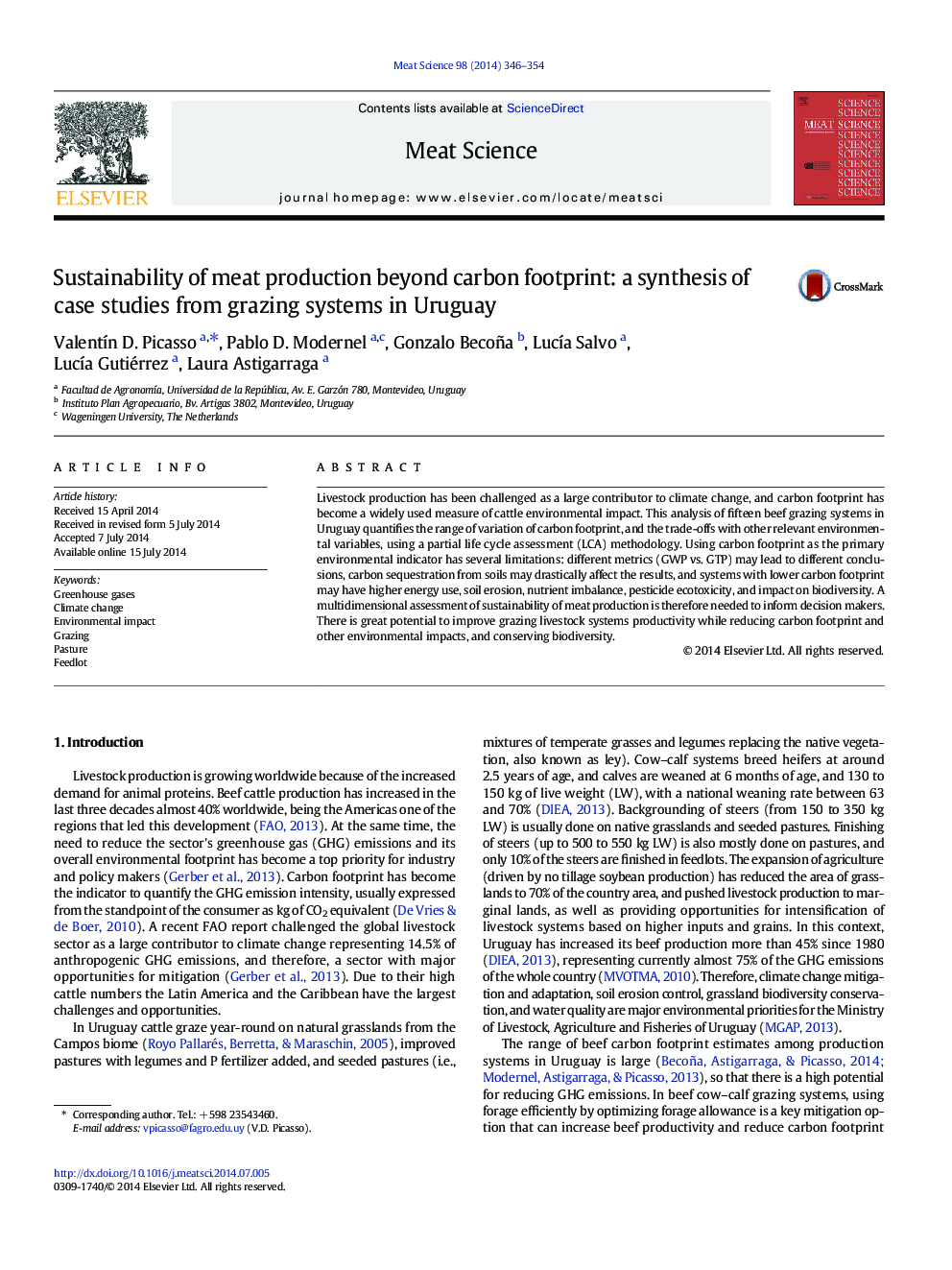| Article ID | Journal | Published Year | Pages | File Type |
|---|---|---|---|---|
| 5791336 | Meat Science | 2014 | 9 Pages |
Abstract
Livestock production has been challenged as a large contributor to climate change, and carbon footprint has become a widely used measure of cattle environmental impact. This analysis of fifteen beef grazing systems in Uruguay quantifies the range of variation of carbon footprint, and the trade-offs with other relevant environmental variables, using a partial life cycle assessment (LCA) methodology. Using carbon footprint as the primary environmental indicator has several limitations: different metrics (GWP vs. GTP) may lead to different conclusions, carbon sequestration from soils may drastically affect the results, and systems with lower carbon footprint may have higher energy use, soil erosion, nutrient imbalance, pesticide ecotoxicity, and impact on biodiversity. A multidimensional assessment of sustainability of meat production is therefore needed to inform decision makers. There is great potential to improve grazing livestock systems productivity while reducing carbon footprint and other environmental impacts, and conserving biodiversity.
Related Topics
Life Sciences
Agricultural and Biological Sciences
Food Science
Authors
ValentÃn D. Picasso, Pablo D. Modernel, Gonzalo Becoña, LucÃa Salvo, LucÃa Gutiérrez, Laura Astigarraga,
